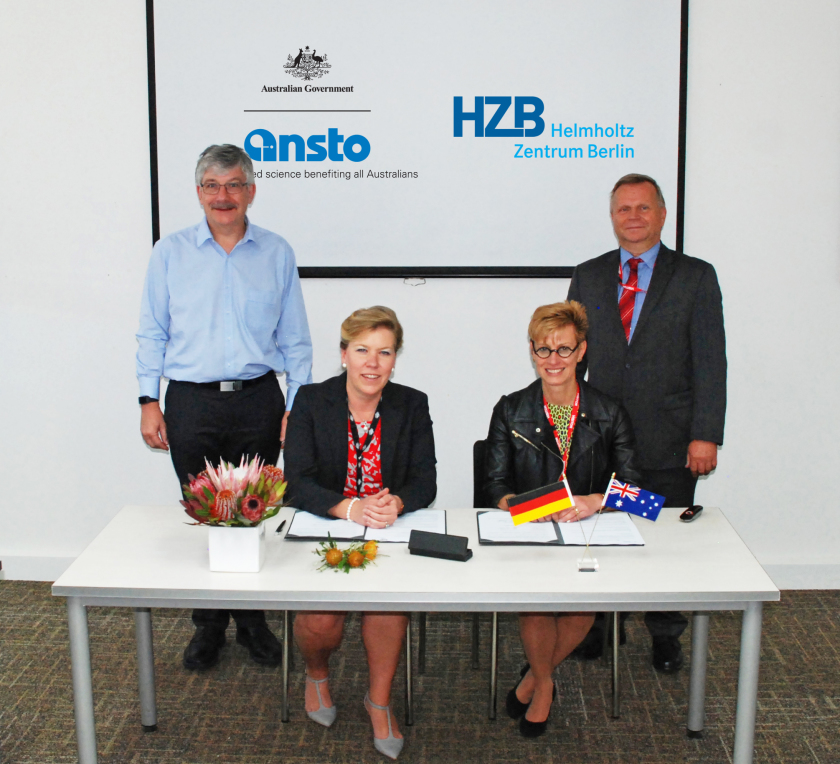HZB and ANSTO have extended their Memorandum of Understanding

ANSTO: Adi Paterson and Simone Richter, HZB: Prof Anke Kaysser-Pyzalla and Thomas Frederking. © ANSTO
Advancing energy materials research together
The heads of the HZB and the Australian Nuclear Science and Technology Organisation (ANSTO) recently have considerably extended the Memorandum of Understanding existing between the two institutions since 2015. They intend to further enhance their cooperation particularly in the area of energy materials research.
The memorandum comprises agreements on the exchange of personnel, advanced training, and reciprocal access to instruments located at the large-scale facilities of ANSTO and the HZB. The Australian Nuclear Science and Technology Organisation (ANSTO) research hub is located near Sydney, operating a synchrotron source as well as other infrastructures including the OPAL research reactor and Australian Centre for Neutron Scattering. ANSTO will be taking over the BioRef-Reflektometer for conducting research on soft matter and solid-state/liquid interfaces from BER II, the Berlin-based neutron source that will be shut down at the end of 2019. It will be available to the user community beginning 2018 under the name “Spatz” (German for “sparrow”). ANSTO is also active in the field of accelerator research, one in which HZB has likewise attained an international reputation.
Moreover, HZB has enhanced its collaboration with other leading Australian institutions. In summer 2016, Monash University appointed three HZB scientists from the field of energy materials research as adjunct professors.
More Information on ANSTO: http://www.ansto.gov.au
arö
https://www.helmholtz-berlin.de/pubbin/news_seite?nid=14564;sprache=en
- Copy link
-
The twisted nanotubes that tell a story
In collaboration with scientists in Germany, EPFL researchers have demonstrated that the spiral geometry of tiny, twisted magnetic tubes can be leveraged to transmit data based on quasiparticles called magnons, rather than electrons.
-
Bright prospects for tin perovskite solar cells
Perovskite solar cells are widely regarded as the next generation photovoltaic technology. However, they are not yet stable enough in the long term for widespread commercial use. One reason for this is migrating ions, which cause degradation of the semiconducting material over time. A team from HZB and the University of Potsdam has now investigated the ion density in four different, widely used perovskite compounds and discovered significant differences. Tin perovskite semiconductors produced with an alternative solvent had a particular low ion density — only one tenth that of lead perovskite semiconductors. This suggests that tin-based perovskites could be used to make solar cells that are not only really environmentally friendly but also very stable.
-
Synchrotron radiation sources: toolboxes for quantum technologies
Synchrotron radiation sources generate highly brilliant light pulses, ranging from infrared to hard X-rays, which can be used to gain deep insights into complex materials. An international team has now published an overview on synchrotron methods for the further development of quantum materials and technologies in the journal Advanced Functional Materials: Using concrete examples, they show how these unique tools can help to unlock the potential of quantum technologies such as quantum computing, overcome production barriers and pave the way for future breakthroughs.
